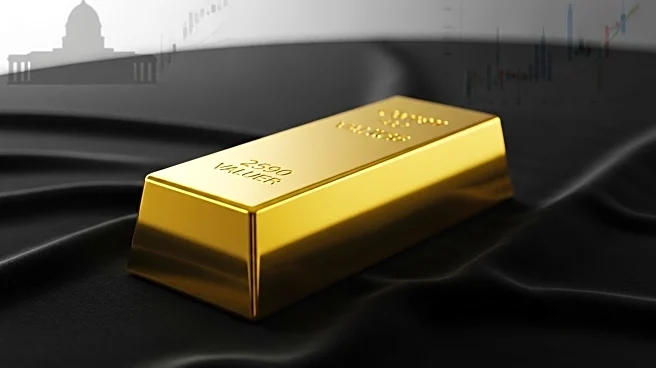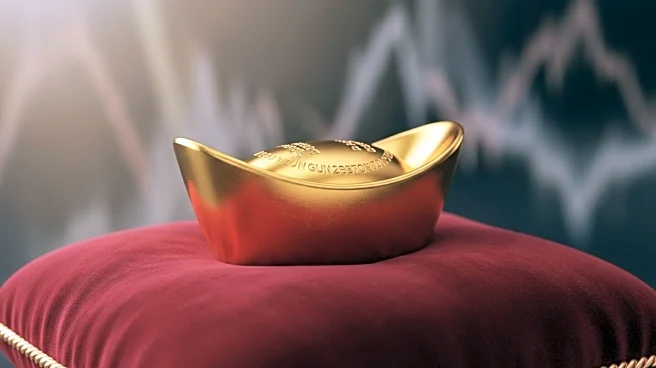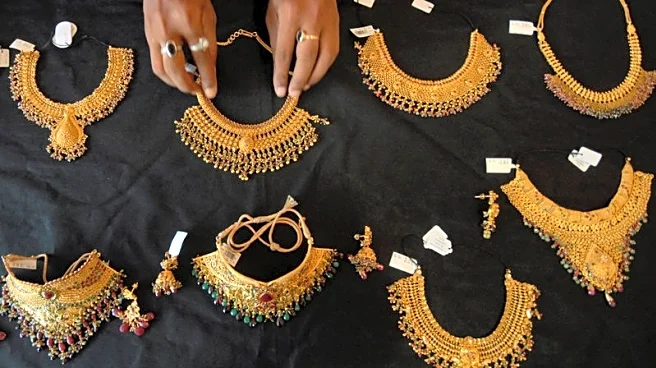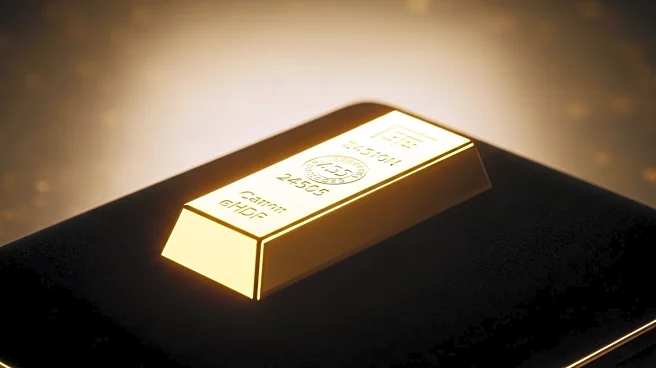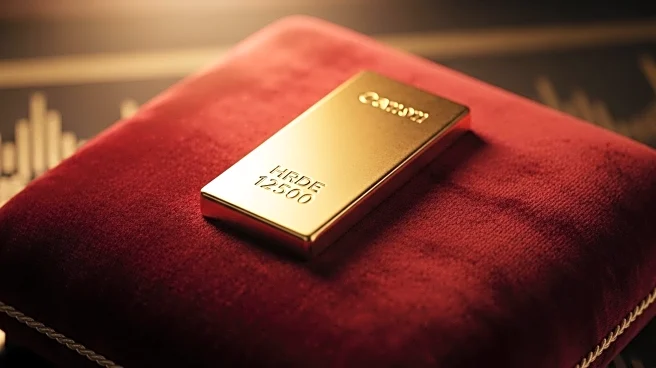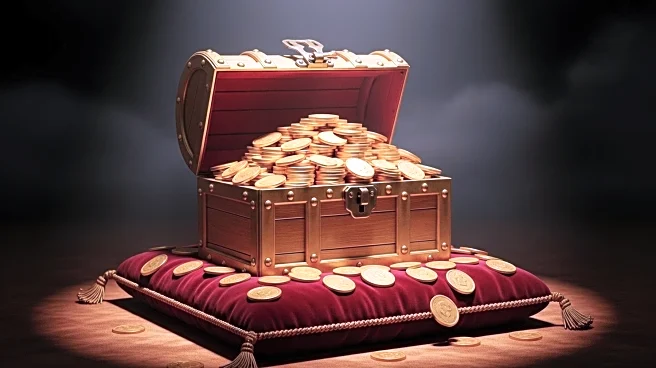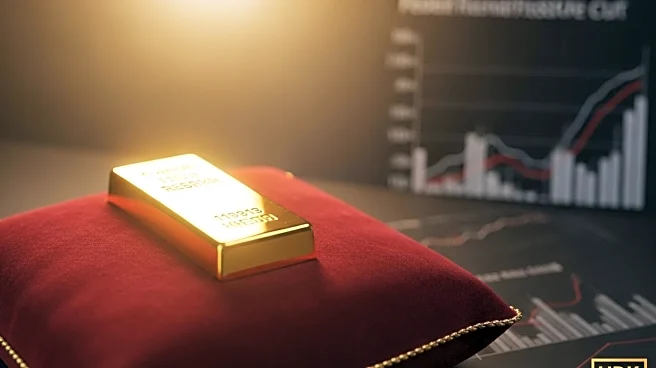What is the story about?
What's Happening?
Gold prices have surged past $4,000 per ounce for the first time, driven by investor demand for safe-haven assets amid global economic uncertainties and expectations of U.S. interest rate cuts. Spot gold increased by 1.3% to $4,036.22 per ounce, while U.S. gold futures for December delivery rose to $4,058. Silver also saw gains, rising 2.4% to $48.97 per ounce. The rally in gold is attributed to geopolitical tensions, a weak dollar, and strong inflows into gold exchange-traded funds (ETFs), which have reached $64 billion year-to-date. The ongoing U.S. government shutdown has delayed key economic data releases, further influencing market dynamics.
Why It's Important?
The rise in gold prices reflects broader economic and political uncertainties, including conflicts in the Middle East and Ukraine, as well as political turmoil in France and Japan. This trend indicates a shift in investor sentiment towards safer assets, potentially impacting global equity markets and currency valuations. Lower U.S. interest rates could further bolster gold's appeal, affecting monetary policy and investment strategies. Major banks have expressed bullish sentiments, suggesting continued support for gold prices into 2026. The situation underscores the interconnectedness of global events and financial markets, with implications for investors and policymakers.
What's Next?
Analysts anticipate continued strong inflows into gold-backed ETFs and central bank purchases, supporting gold prices in 2026. The Federal Reserve is expected to implement a 25-basis-point rate cut at its upcoming meeting, with another reduction likely in December. This could further enhance gold's attractiveness as an investment. Additionally, the 'fear of missing out' phenomenon may drive more investors towards gold, sustaining its upward momentum. The potential for the Fed to adopt a more hawkish stance on interest rates remains a key factor to watch, as it could influence gold's trajectory.
Beyond the Headlines
The surge in gold prices highlights the broader implications of geopolitical instability and economic policy shifts. It raises questions about the sustainability of current market trends and the role of precious metals as a hedge against uncertainty. The situation also reflects the impact of political decisions, such as interest rate policies, on global financial markets. As investors seek stability, the dynamics of gold and other precious metals could shape future investment strategies and economic forecasts.
AI Generated Content
Do you find this article useful?


